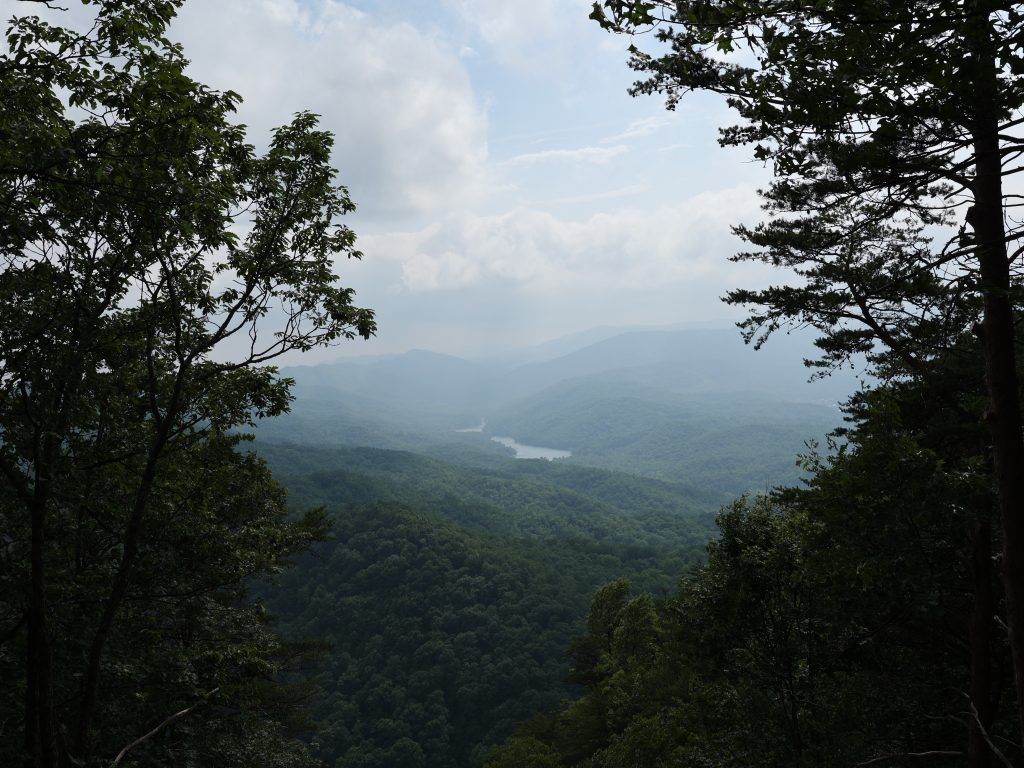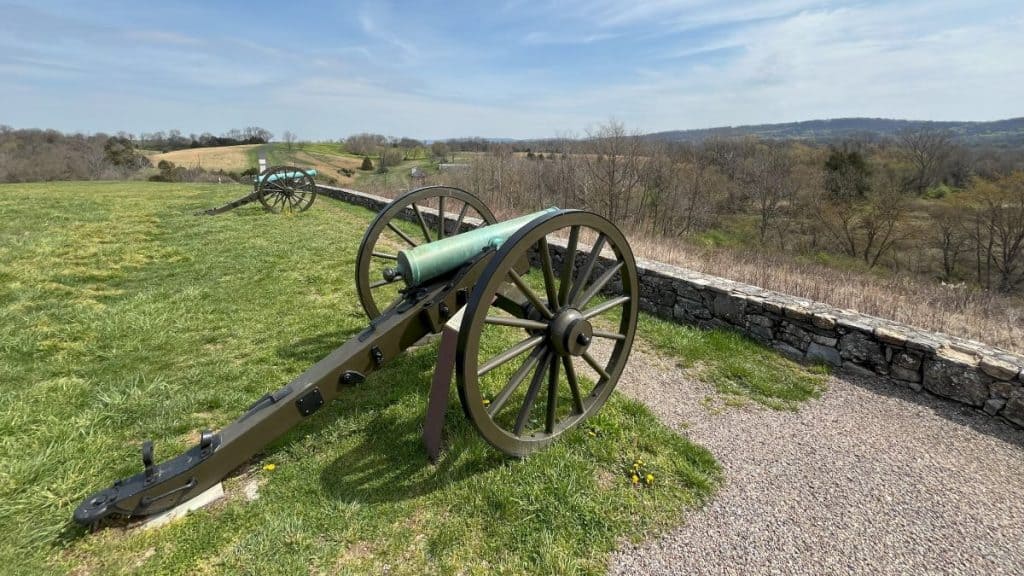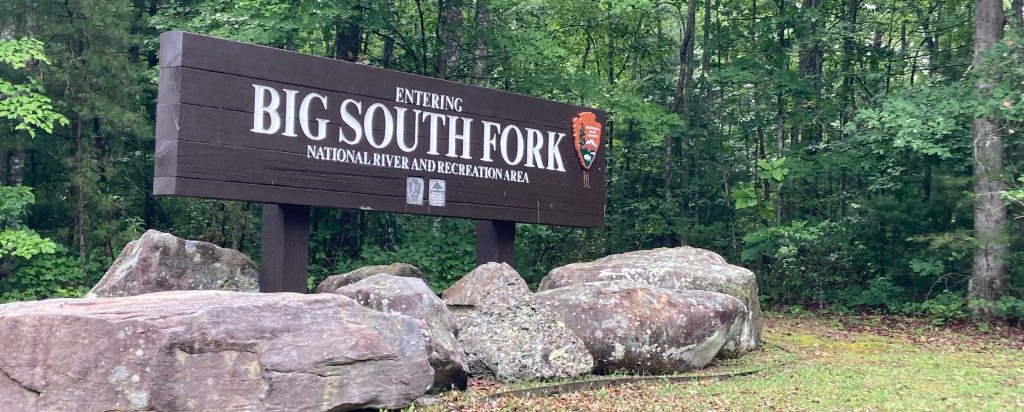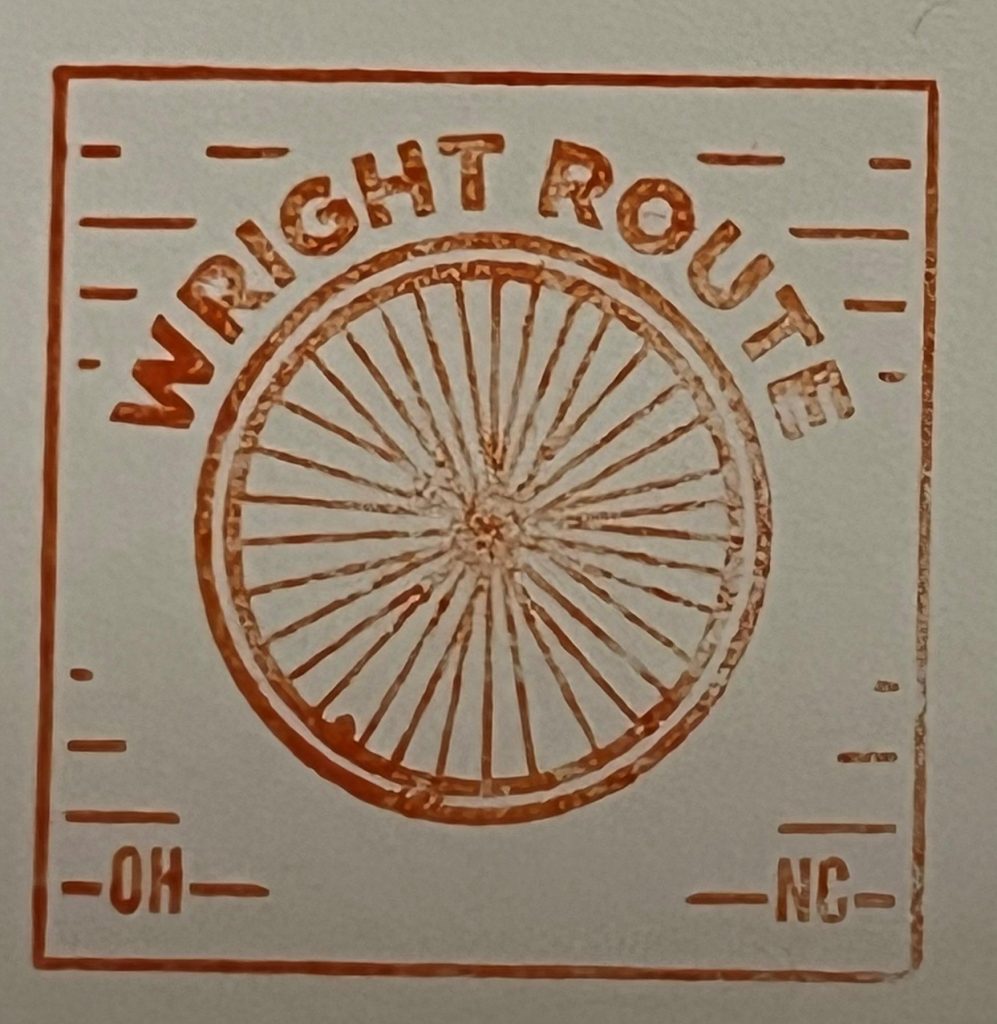Types of National Parks: Complete Guide to All Parks
Most people think there are only 63 “national parks” in the United States. The truth? There are over 430+ different sites in the National Park System. Only 63 of them are officially called “National Parks.” The rest represent different types of national parks like National Monument, National Historic Site, National Battlefield, and about 15 other types that can honestly be pretty confusing.
I’ve visited most of these parks while collecting National Park passport stamps and understanding the different types of national parks actually makes your trips way better. You’ll know what to expect, how much time to plan, and what makes each place special.
Table of Contents
Not just National Parks
Why does everyone just say “National Parks” for everything? It’s easier! Even the National Park Service uses “parks” as shorthand when talking about the whole system. So, it is easy to be confused.
- 63 sites are “National Parks” (like Yellowstone and Grand Canyon)
- 370+ sites represent other types of national parks
- All 430+ sites offer passport stamps
- 19+ different types are used across the system
Complete Guide to Types of National Parks
Different types of national parks sites actually matter in planning out your trips. Let’s break down the differences and see how you can leverage that to make setting up trips better.
Natural & Scenic Areas
National Parks (63 sites)
These are the major destinations that most people think of when you say, ‘National Parks’. Generally, a National Park contains a variety of resources and encompasses large land or water areas to help provide adequate protection of the resources.

I have found that the National Parks tend to be destination trips where you’ll want to plan multiple days, book accommodations well in advance (especially for popular parks), and expect crowds during peak seasons.
- What to expect: Entrance fees, crowded peak seasons, extensive visitor centers, and multiple activities.
- Examples: Yellowstone, Grand Canyon, Great Smoky Mountains
National Monuments (130+ sites)
Smaller than National Parks, focused on preserving at least one nationally significant resource or feature. This is the largest category, with other 130 locations, which can be either natural wonders (Devils Tower in Wyoming) or historical locations (Fort Monroe in Virginia). My experience is this can be great for day trips or even quick stops of a few hours.
- What to expect: Perfect for day trips, often free entry, focused on one main attraction.
- Examples: Devils Tower, Statue of Liberty, Fort Monroe

National Preserves (21 sites)
This category is established primarily for the protection of certain resources, but activities like hunting and fishing or the extraction of minerals and fuels may be permitted. Several lie directly next to National Parks and share their name, particularly in Alaska. This means you might encounter hunters during certain seasons, and the recreational opportunities often include activities you won’t find in National Parks.
- What to expect: More recreational activities, possible hunter encounters during seasons.
- Examples: Big Cypress in Florida, Gates of the Arctic National Preserve
National Seashores (10 sites)
The National Seashores protected coastal areas on the Atlantic, Gulf of Mexico, and Pacific coasts, focusing on beach and marine environments. These areas provide amazing beach experiences with traditional beach experiences but also educational opportunities.
- What to expect: Beach activities plus National Park education and interpretation.
- Examples: Cape Hatteras, Cumberland Island, Fire Island

National Lakeshores (3 sites)
Freshwater equivalents to National Seashores. Although national lakeshores can be established on any natural freshwater lake, the existing three are all located on the Great Lakes.
- What to expect: Great Lakes recreation with sand dunes and hiking trails.
- Examples: Sleeping Bear Dunes, Indiana Dunes
Historical & Cultural Areas
National Historic Sites (86+ sites)
Preserve single historical features or tell focused stories about specific people or events.
- What to expect: 1-3 hour visits, excellent ranger programs, specific historical focus.
- Examples: Maggie L. Walker, Lincoln Home, William Howard Taft

National Historical Parks (63 sites)
Larger and more complex than Historic Sites, telling broader historical narratives.
- What to expect: Multiple components, longer visits, comprehensive historical stories.
- Examples: Harpers Ferry, Colonial, Cumberland Gap

National Memorials (31+ sites)
Primarily commemorative sites that honor people or events. You will find a large number of these in Washington D.C.
- What to expect: Reflective experiences, may not be at actual historical locations.
- Examples: Lincoln Memorial, Flight 93, Korean War Veterans Memorial

Military History Areas
The National Park Service preserves more Civil War battlefields than any other conflict, but you’ll also find Revolutionary War and other military sites.
National Military Parks
Large, complex battle sites that typically lasted multiple days and cover extensive areas where you can understand entire military campaigns.
Examples: Fredericksburg, Vicksburg, Gettysburg

National Battlefield Parks
Smaller than Military Parks but still preserve significant military actions, typically focusing on regional campaigns or multiple related engagements.
Examples: Richmond, Kennesaw Mountain
National Battlefields
Preserve specific battle sites, often single-day engagements, where you can follow the action and understand how individual battles unfolded.

National Battlefield Sites
The smallest military designation with only one remaining site that preserves specific locations within larger battle areas. Brices Cross Roads National Battlefield Site in Mississippi preserves a specific crossroads where fighting occurred during a Civil War cavalry engagement.
The only example: Brices Cross Roads
Recreation & Transportation
National Recreation Areas (18+ sites)
Originally created around reservoirs, now include various areas that have focus around providing outdoor recreational opportunities beyond what other parks provide.
- What to expect: Boating, jet skiing, and water sports typically prohibited elsewhere.
- Examples: Bighorn Canyon, Lake Mead, Big South Fork

National Parkways (4 official units)
Scenic roadways designed for leisurely driving through beautiful areas, encompassing ribbons of land flanking roadways that offer opportunities for driving through areas of scenic interest.
- What to expect: Low speed limits, scenic overlooks, not designed for fast travel.
- Examples: Blue Ridge Parkway, Natchez Trace, John D. Rockefeller Jr. Memorial Parkway

Special Designations
Other Designations
- National Reserve: Partnerships with state/local authorities (City of Rocks)
- National Scenic/Historic Trails: Long-distance trails managed as NPS units
- Wolf Trap National Park for the Performing Arts: The only performing arts National Park
- Other Park Designations: Several sites like Catoctin Mountain Park, Rock Creek Park, and Prince William Forest Park are simply designated as “Parks” without additional qualifiers, representing unique or early additions to the system
Complete Types of National Parks Reference Table
Here’s every type in the National Park System in one easy reference:
| Type | Count | Brief Description |
|---|---|---|
| National Park | 63 | Large, diverse natural areas; premier destinations |
| National Monument | 130+ | Preserve specific natural, cultural, or historic resources |
| National Historic Site | 86+ | Single historical features or focused stories |
| National Historical Park | 63 | Complex historical areas with multiple components |
| National Memorial | 31+ | Commemorative sites honoring people or events |
| National Preserve | 21 | Natural areas allowing hunting/fishing/resource use |
| National Recreation Area | 18+ | Areas designed for recreational activities |
| National Seashore | 10 | Protected coastal and marine environments |
| National Military Park | 4 | Large, complex Civil War battlefields |
| National Battlefield | Multiple | Sites of specific military engagements |
| National Battlefield Park | Multiple | Regional military campaign areas |
| National Parkway | 4 | Scenic roadways for leisurely driving |
| National Lakeshore | 3 | Protected Great Lakes shoreline areas |
| National River | 4 | Free-flowing waterways and corridors |
| National Wild & Scenic River | 10 | Protected river systems under Wild & Scenic Rivers Act |
| National Reserve | 2 | Partnership areas with local/state authorities |
| National Scenic Trail | Multiple | Long-distance recreational trail systems |
| National Historic Trail | Multiple | Historic routes of national significance |
| Other Special Types | Few | Unique sites like Wolf Trap performing arts center |
Note: Counts reflect official NPS units and may change as new areas are designated.
The Most Confusing Pairs Explained
National Historic vs Historical Parks
| National Historic Sites | National Historical Parks |
|---|---|
| Single historical feature | Multiple historical features |
| Focused story | Broader historical narrative |
| 1-3 hour visits | Half-day to full-day visits |
| Example: Lincoln Home | Example: Hopewell Culture |
National Monument vs Memorial
| National Monuments | National Memorials |
|---|---|
| Purpose: Preserve specific resources | Purpose: Commemorate people/events |
| Located at actual resource | May not be at historical location |
| Example: Jewel Cave | Example: Lincoln Memorial |

Military Site Designations
| Site Type | Size/Scope | Example |
|---|---|---|
| National Military Park | Large, multi-day battles | Fredericksburg |
| National Battlefield Park | Smaller military actions | Kennesaw |
| National Battlefield | Single battle sites | Antietam |
| National Battlefield Site | Specific locations | Brices Cross Roads |
What This Means for Your Visit
Understanding different types of national parks helps you plan better trips:
- National Parks: Plan 2-7 days, book accommodations early, expect crowds and fees.
- National Monuments: Perfect day trips, often free, focused attractions.
- Historic Sites: Plan 1-3 hours, don’t miss ranger programs.
- Historical Parks: Allow half to full days, multiple components to explore.
- Battlefields: Bring audio tour equipment, excellent driving tours available.
- Recreation Areas: Great for families wanting water sports and outdoor activities.
Passport Stamp Collecting Across All Types of National Parks
Every site in the National Park System participates in the passport stamp program, which will allow you the ability to track your travels. Here’s what I’ve learned on my quest to collect all 430+ stamps:
Stamp Locations:
- Most stamps are located in visitor centers
- BUT, some bonus stamps can be found at special ranger stations that are only staffed as selected times
- Recreation Areas might have stamps at marina offices
- Some sites have seasonal availability
Bonus Stamps:
- Beyond the standard and Official parks stamps, you may find special ‘bonus’ stamps
- Some have Military themes like one I found at Stones River
- Always ask about these bonus stamps – you might be surprised by what you find!



For complete stamp collecting overview, check out passport program guide!
Planning Your Next Adventure
Ready to explore beyond the famous 63 National Parks? Here’s how to get started with different types of national parks:
- Pick a region: Start with our Florida National Parks or South Carolina National Parks guides
- Understand your interests: Love history? Focus on Historic Sites and Historical Parks. Prefer nature? Try National Monuments and Seashores.
- Plan your passport collecting: Grab the best passport book and start documenting your adventures across all types of national parks
- Consider state parks too: Don’t forget about state park passport programs for even more collecting opportunities
Frequently Asked Questions
Do all NPS sites charge entrance fees?
No! While major National Parks typically charge a fee, many Historic Sites and Memorials are free. Always check ahead before your visit.
Roaming Monk Tip: Check the Fee Free Days to take advantage of a free admission to a National Park or find a fourth grader.
Can I use my National Parks Pass everywhere?
The America the Beautiful Annual Pass works at any fee-charging site, regardless of designation. This also includes National Wilderness refuges and amenity fees at National Forests and Bureau of Land Management sites.
Which designation has the most sites?
National Monuments with 130+ sites, followed by National Historic Sites.
Do all sites have visitor centers?
Most do, but some smaller or remote sites might just have contact stations, outdoor exhibits or are combined at another location.
Can I get stamps at all sites?
All official units participate in the stamp program. Some remote or smaller sites may have their stamp at another partner site as some smaller locations may have limited hours or access.
What’s the difference between a National Park and everything else?
National Parks are larger, more diverse, and typically require longer visits. Other types of national parks are usually more focused on specific resources or stories.
Ready to start exploring? Check out our regional guides and begin discovering the incredible diversity beyond those famous 63 National Parks!
